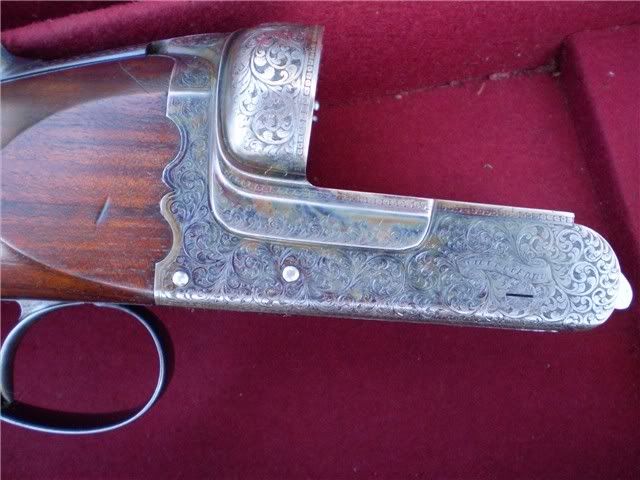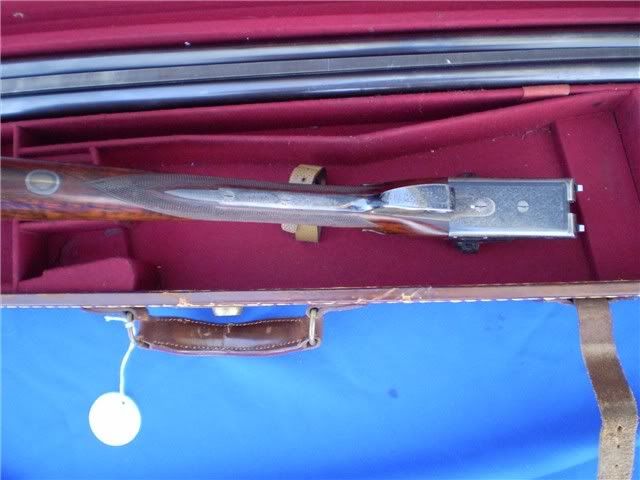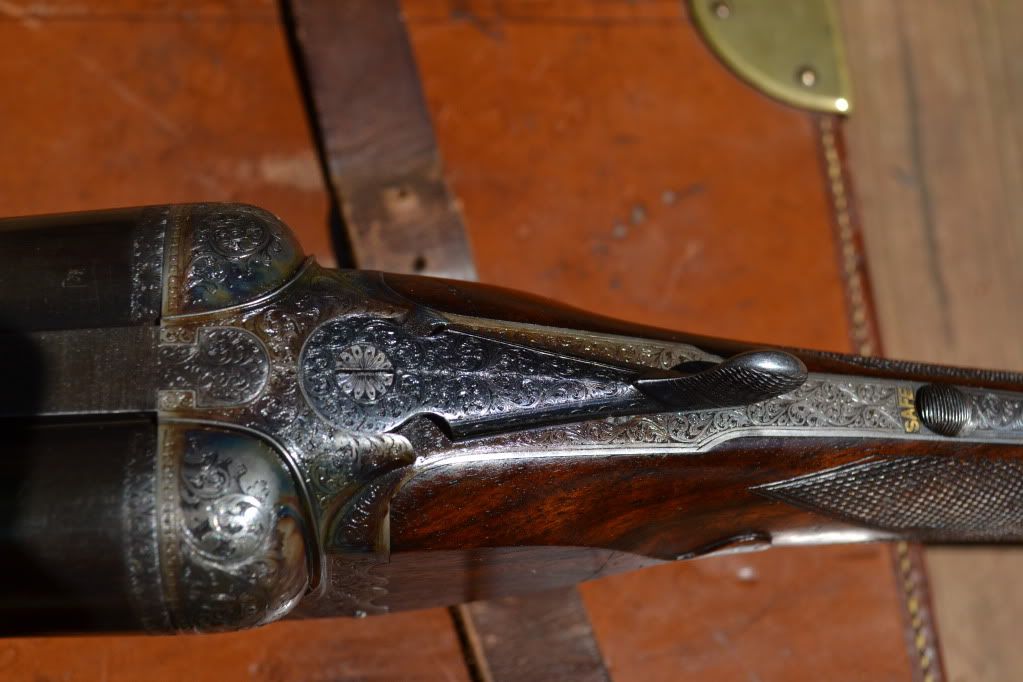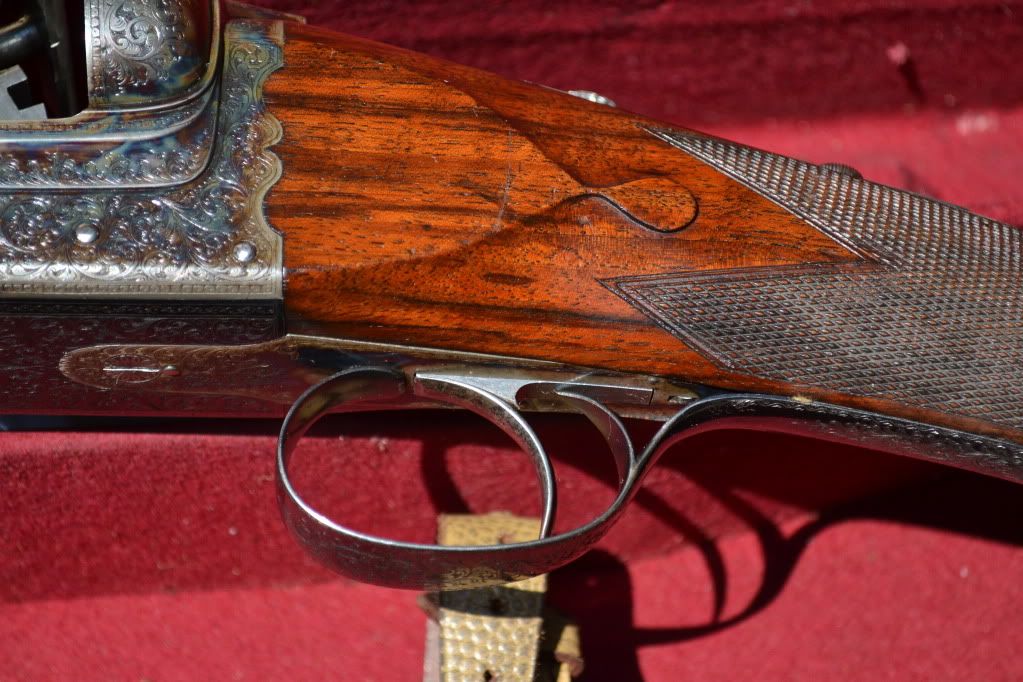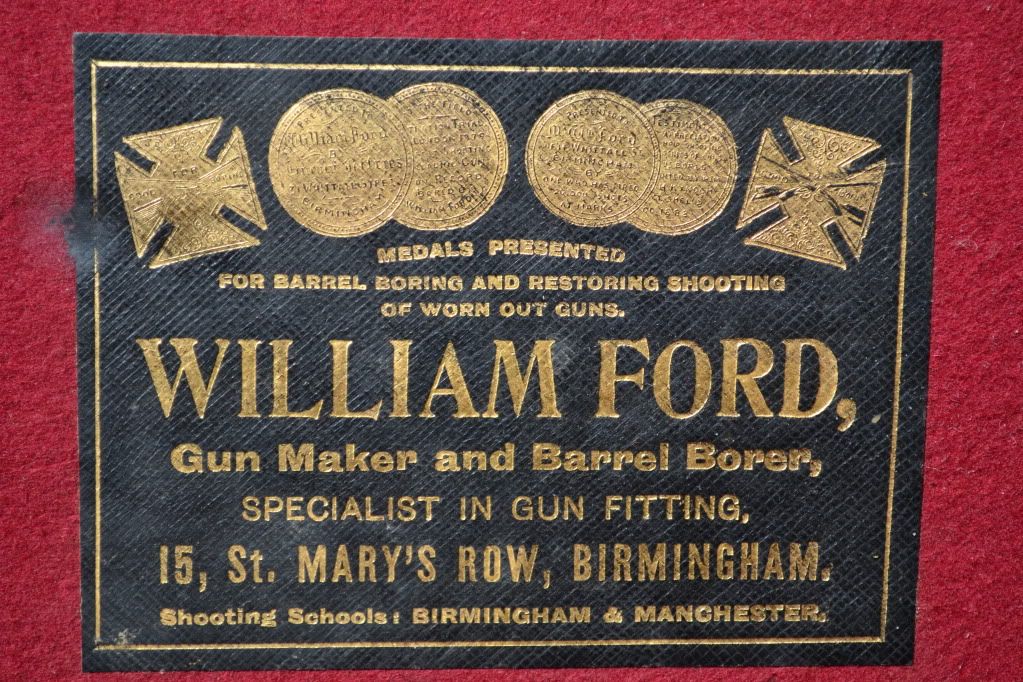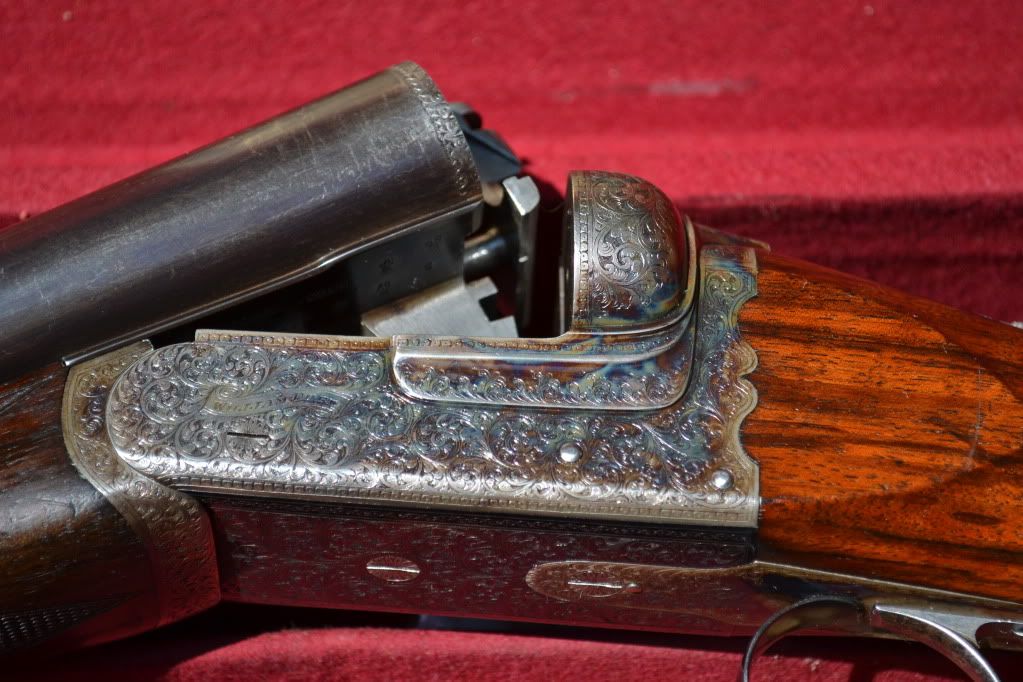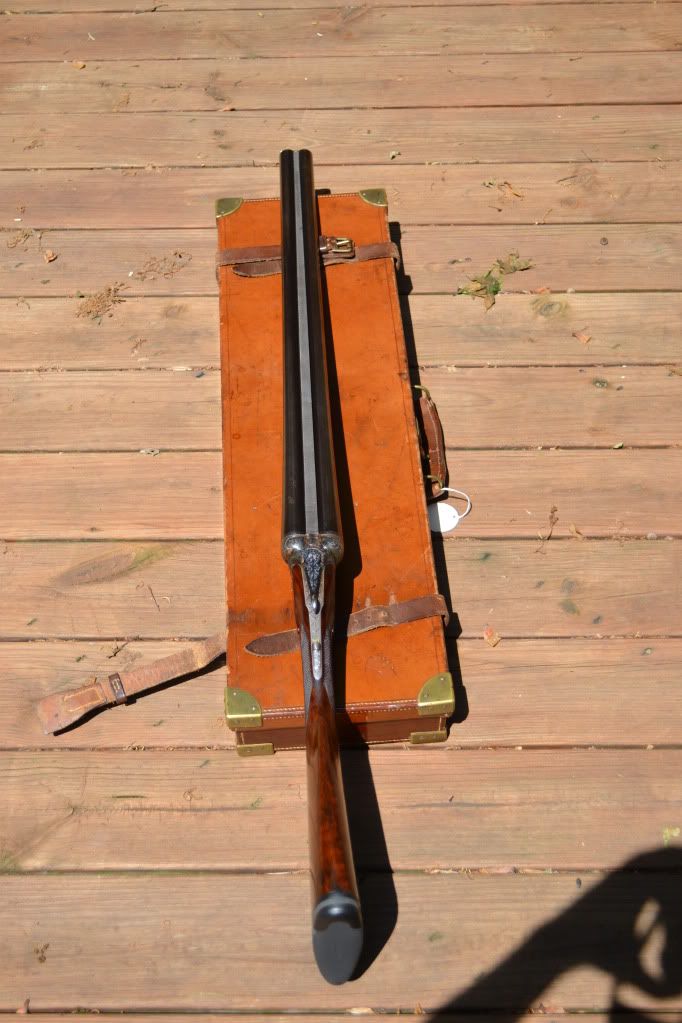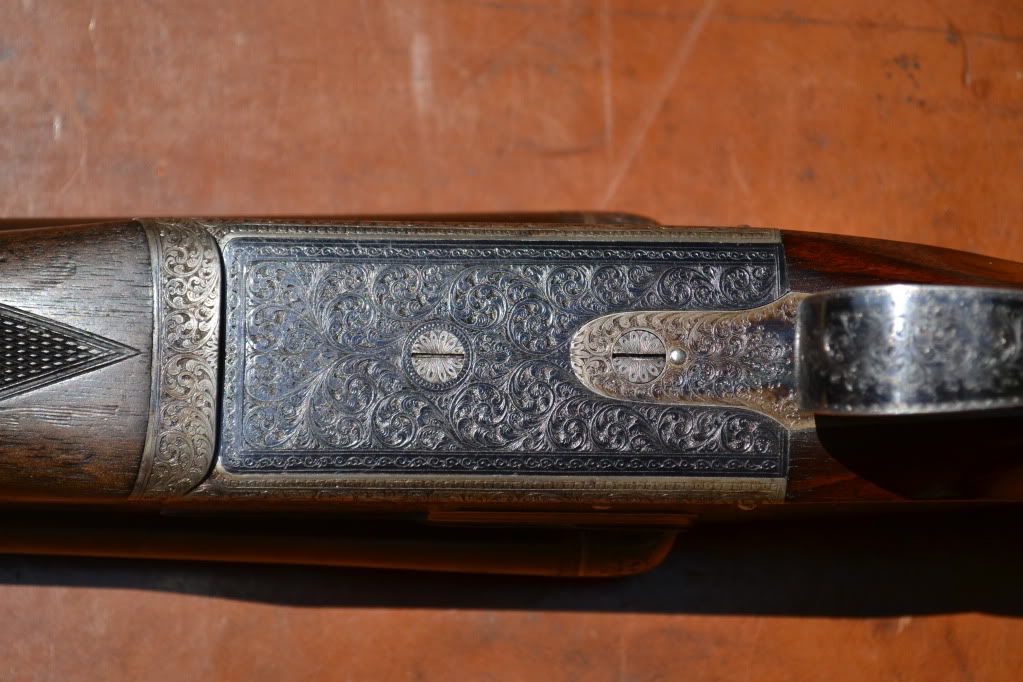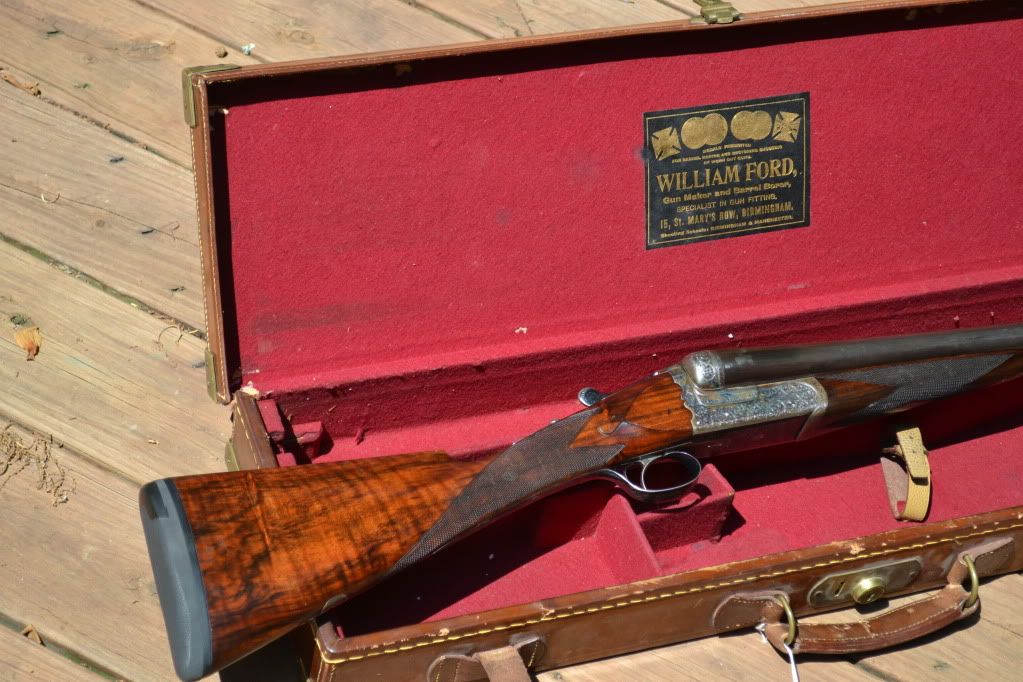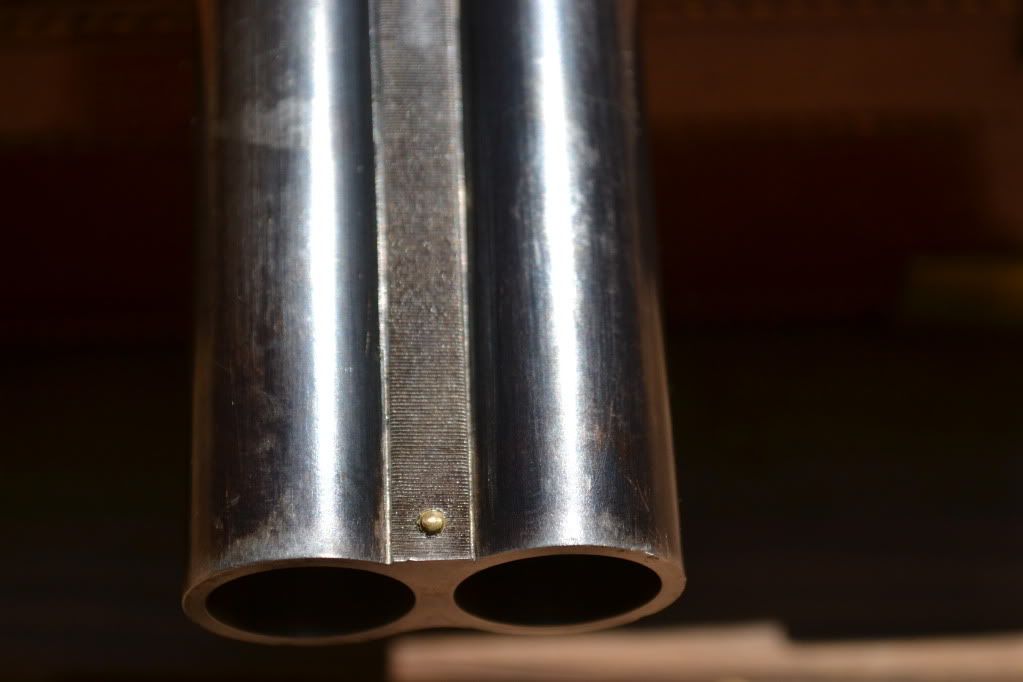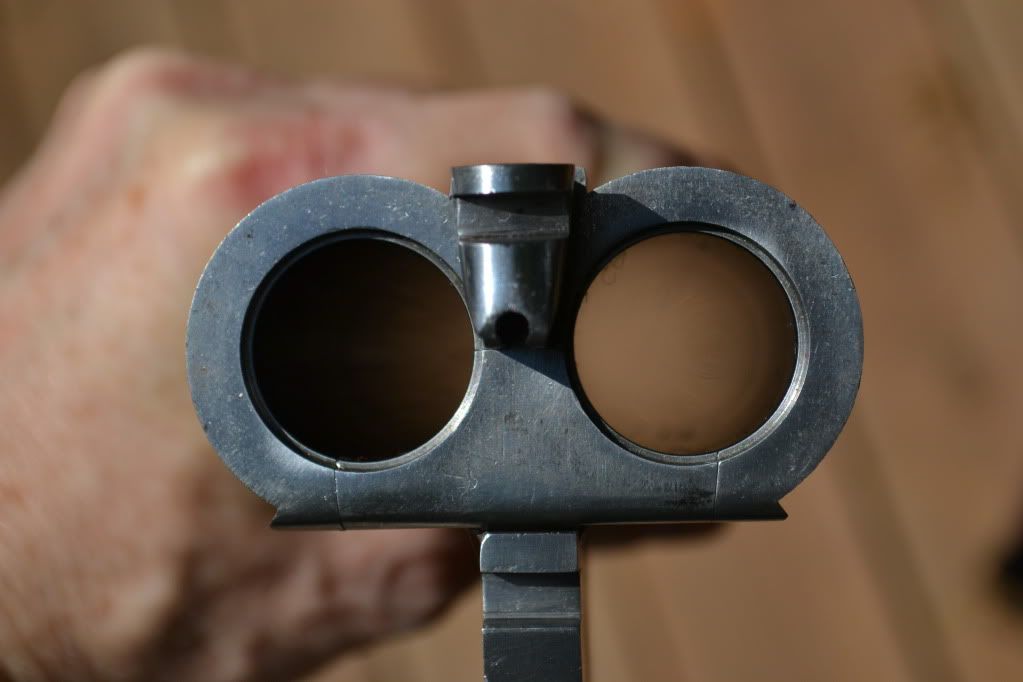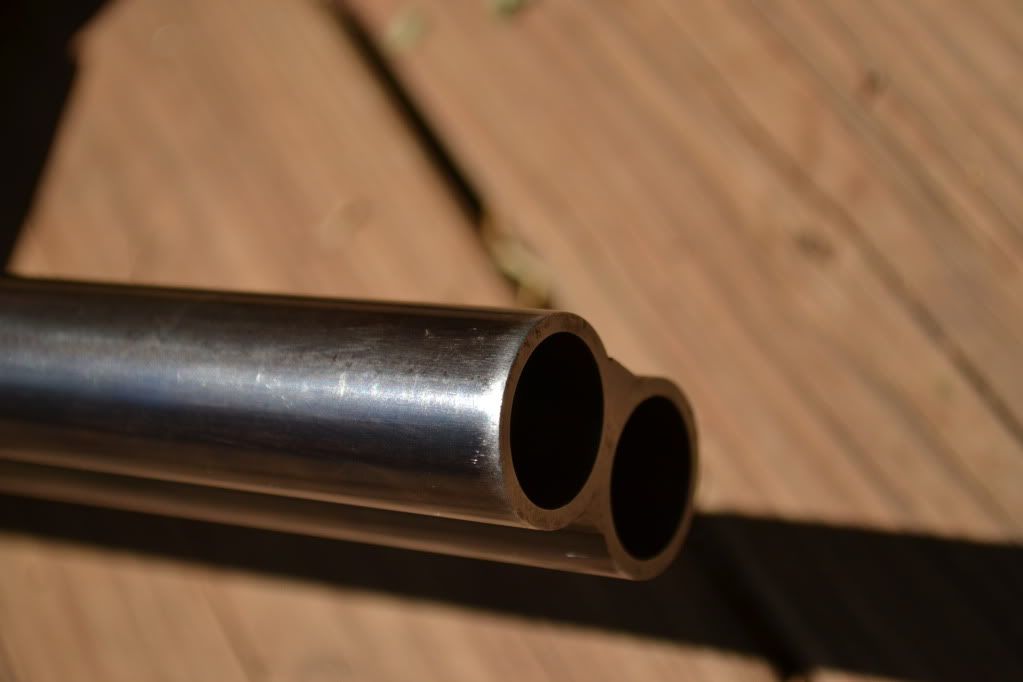I recently purchased a 10 bore double proofed for a 2 1/4 oz load. Barrels indicate this was a 3 1/4" shell. Nitro proofs. Believe the gun is from the mid-1920s.
Any suggestions for where to research an appropriate 'heavy' load? I expect most use will be with 2 7/8" ammo, but it would be interesting to see what performance, and recoil, is like with the loads marked on the barrel flats.
Any help would be appreciated.
Regards,
Chris
Hello Chris and welcome. It sounds a little as if your gun may be of the chamberless type. Does it say on it anywhere 'For Brass Cases Only' or something like that? If you look down the barrels from the breech end does it look as if there is no forceing cone? Lagopus.....
CJF,
If possible please post photos of the proof marks!
I have a Parker 10 gauge that has 3 1/2 Ton British proof for their 3" shell, if memory serves me correctly this morning...
Mark
My Tolley is nitro proofed for 3 inch, 3 1/2 tons 1 1/2 oz.
I load 24 gr. PB and 1 1/4 oz which is a nice comfortable load.
That is what puzzles me. English 10 bores usually go 2 5/8", 2 7/8" and 3". The only 3 1/4" 10 bore cartridge I have in my collection is the thin brass for chamberless guns. Photos of proof marks will help unravel the mystery. Lagopus.....
Here is a picture of my TOlley proofs -FYI
[img:left]

[/img]
Here's a picture of the proofs:
[img:center]

[/img]
Hello Lagopus - proof pasted above. I appreciate any help you can lend.
Is that an 8/10 hybred?!?!?!?
Started out as 10, converted somewhere to 8?
Armitalia?
Double Discharge on back trigger?!
Oh my....:)
Yes, it looks like you have a chamberless 10 bore. They were a special patent by a man called dr. Charles Heath. I found this on the web
http://www.riflemagazine.com/magazine/PDF/hl266partial.pdf you will have to scroll down to the article on reloading brass shells. If you notice on yours it has the 10 in the diamond shape on the proof mark; this indicates a 10 bore chamber, but the bore diameter indicates an 8 bore. There is also the SP mark for special definitive proof which indicates something out of the ordinary. Proof marks are 1904 to 1925 period.
Basically the thin brass case would be loaded with with wads of 8 bore size; the case being so thin will accomodate these. You could use ordinary 2 7/8" or 3" 10 bore ammunition which it will fire but I suspect the patterns will suffer due to poor barrel obturation allowing hot gasses to get past the 10 bore wads in the 8 bore barrel. It is a case of try it and see. Original ammunition is often found marked; in your case 10/8 or in the case of a chamberless 12 bore 12/10. The ammuntion for such is now collectors stuff. I have a few of different sizes and will try to search out a photograph. Some of the chamberless 12 that I have come across in the U.K. have been re-chambered to 10 bore and re-proofed for the 3 1/2" Magnum 10 bore cartridge quite successfully. Your gun is quite a rare collectors piece. You could do one of several things; use it as is with commercial 10 bore stuff and see how it shoots, find some 10 bore brass cases (Magtech would be good but I don't think they do them in 10 bore) someone my make them if you search the web or you could have it bored out in the chamber to 8 bore and send it for reproof. The latter may not be worth it in your case due to the restrictions on using 8 bores for wildfowl in America. I see you live in North Carolina so I suspect that your gun is from the great days of wildfowling on the Chesapeake. It may be quite ammusing to let one of your Game Wardens see it and try to deceide whether you are using a 10 bore legally or an 8 bore illegally.
It is a scarce and wonderful collectors item that you have and I would be inclined to leave it as it is and invest in one of those cheap Spanish double 10 bore magnums for shooting. That is what I would do.
You didn't say what make it was. I would love to see more photos. If you let me know the name of the Maker, the address on the rib and serial number I may be able to let you have much more information. Lagopus.....
Some cases for Chamberless guns. Note headstamp: Lagopus.....
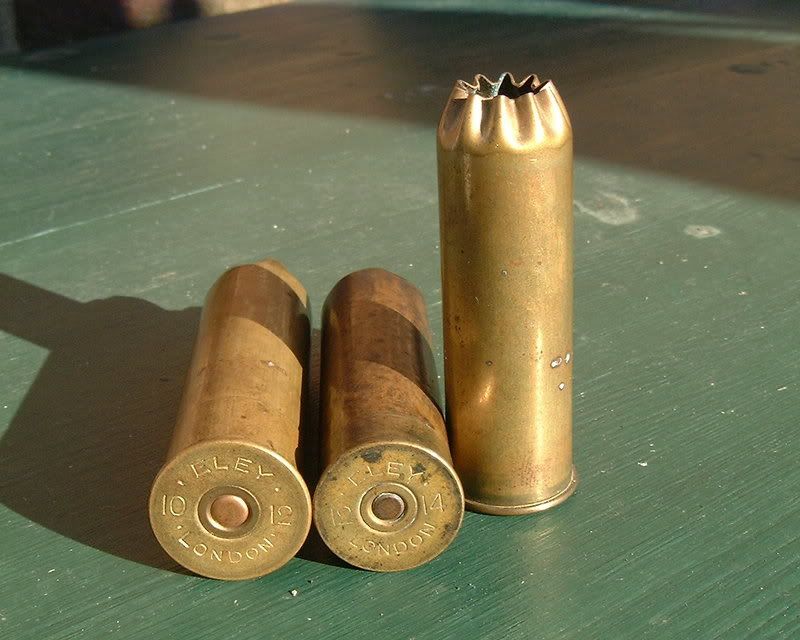
I appreciate the in depth reply to my question!
The gun is in transit now and I will post many more pictures once I have it in hand in a few days. Based on the serial and another gun by the same maker, I believe it was made in the 1920s.
My intent is to leave it as is. More to come.
Burrard gives a good bit of coverage to these chamberless guns in his 3-volume work "The Modern Shotgun". While these guns used heavier than normal shot charges they alo had lower than normal velocities which kept the pressures in line. He gives some load data on them, but of course with Black Powder & Obsolete Smokeless ones, but they can serve as a reference as to what the loads should be. The gun may be somewhat light for handling 2ľoz at normal velocity, which might produce a fearsome recoil.
Can you bring the gun to the Southern SxS this weekend in Sanford? There will be many people there who would love to see it.
I'll be helping Toby Barclay of Heritage Guns in the 1st tent. I'll try and wear a name badge.
Joe
Joe - I would truly like to bring the gun to Sanford, but I have a schedule conflict. I am planning to take it over Carolina Sporting Arms early next week.
If you are interested in meeting there, PM me with your phone number and I'll call to arrange a time. Thank you for your interest. This is a big purchase for me and I will be anxious until I actually have the gun in my hands for a closer inspection. Regards, Chris
I would think that with modern plastic wads, their base skirt would expand to fill the bore just fine and gas blowby would not be an issue. There are plenty of American trap shooters who swear by the Stan Baker "Big Bore" barrels which are essentially a 12-gauge chamber all the way to the choke. About .800" bore.
I second Researcher's suggestion. I often shoot 12 gauge loads in 10 gauge guns using Gauge Mates reducers. The downrange results are very good and comparable to those same loads shot in 12 gauge guns.
The loads used range from 6000 PSI reloads to factory ammo, often the promotional loads found at WalMart.
Chris, very interesting gun. I have a couple of questions, who is the maker and what does it weigh?
It's a very nice gun.
I can't help but thinking Tony Treadwell would have loved this thread.
Just for interest a William Ford double barrel boxlock chamberless 8 bore (not 10) sold at Scotarms Auctions (in England) for £4,000. Described as having 30 inch barrels (short for an 8) and bold scroll engraving. Lagopus.....
While on the 3 1/4" 10 bore topic.I have two guns that are 3 1/4" chambered and one marked for the brass "Perfect" case. They are not however chamberless. Both guns were black powder proofed and stamped with a bore size of 10/2.This would put it in a range of
.793 - .803. as built. They both measure about .800.They have forcing cones but are not very deep.Obviously designed for the thin wall case and a larger wad. I also have another hammergun by W.P.Jones that started life as a chamberless 12 with 34" steel barrels and was rechambered and proofed to 3 1/2" magnum 10.It did service as such with a friend in Lancashire for several years,accounting for a serious number of Pinkfeet and Greylag before I obtained it.They all weigh over 10 pounds. One is 11 1/4
Terry, that's what usually happens to chamberless guns here in Britain and it adds value rather than detracts from it. Your 12 bore chamberless made into a 3 1/2" 10 makes it useable. It shows how strongly made they were. CJF's 8/10 would no doubt be re-chambered to an 8 here and double its value. As 8's can't be used for wildfowling in the U.S. it is best left original as a collector's piece. As for the 'Perfect' brass case this was Kynoch's trade name for the brass cases for chamberless guns. I have quite a few of the Kynoch Perfect cartridges in my collection. One of my 3" chambered 12 bores is marked on the top of the barrels, 'For 3" Paper Cases Only' as an aid to preventing the loading of a thin brass case and upping the pressure. Lagopus.....
I have a 10 bore Joseph Lang BL with 32" barrels made sometime in the 1920's. It was made as a 2 7/8", but I had it changed to 3 1/4". The work was done by a chap in the west of England (forgot his name) and he also made me 3 1/4- 1 3/4oz shells for the gun. I addition I got some brass shells too. They all worked fine. With no. 3 (GB) pellets, it is a very good goose gun with a nice balance. As I understood it, he had done that operation with many 10 bores.
I returned home today and was delighted to find that the William Ford had arrived.
Weight is 10.23 lbs. Barrels alone weigh 4.95 lbs and are extremely stout at the muzzles. By the way, the leather maker's case is really quite nice and is sized for 30" barrels. Based on that fact, and the appearance of the muzzles, I believe this is the original length.
Next step is to take this down to a local shop to have the barrel walls measured.
Again, thanks to all who have helped with information. I am grateful.
Chris
Great news Chris. It looks as if Christmas has arrived early in your household. It would be nice to see more photos of her.
I have just looked in an old Eley Trade catalogue; which sadly is undated but I think from the 1950's and is still advertising Thin Brass cases for 10 bore 3 1/4" and 12 bore ones from 2 1/2" to 3 1/4". I would suspect that they were of pre war vintage as they were just being sold off as cases. Good luck with taking her shooting. I still would be interested as to how your Game Wardens would describe it; would it be a 10 bore or an 8 bore by their definition? Lagopus.....
Wonderful shotgun

What is the diameter of the head end of the chamber?
Thanks
Mike
Mike - I wasn't 100% confident I interpreted your question correctly, but I am taking you to mean what is the diameter of the barrel right at the breech face where the case head's rim would rest. If that is what you meant, the answer is 1.365" to 1.374".
Here are some additional measurements:
- at the breech, total width across both barrels is 2.592"
- height of right barrel at breech from flats to 12 o'clock: 1.365"
- height of left barrel at breech at same point: 1.374"
- barrel thickness at breech, measured just inside the cut for rim: 0.243"
- diameter of rim relief cut: 0.936"
- diameter of chamber just inside rim: 0.862"
- width across both barrels at muzzle: 1.874"
- height (diameter) of barrels at muzzle: 0.961"
- thickness of barrels at muzzle: 0.085"
The barrels are 30" long and weigh 4.95 lbs.
Thanks
You answered my question and more

Mike
What a stout beautiful gun! I have a thing for scalloped-back boxlocks..... One of the nicest and most unique I've seen.
You've got a nice piece there. William Ford was at 15, St. Mary's row from 1889 to 1939 They generally called it 'Eclipse Works' 15 St. Mary's Row up until 1954. Very high quality for a wildfowling gun. Lagopus.....
For some reason I had been thinking this gun was made prior to 1925. My thanks to Lagopus for setting me straight...proofs are post-1925.
Proof marks on the Ford -
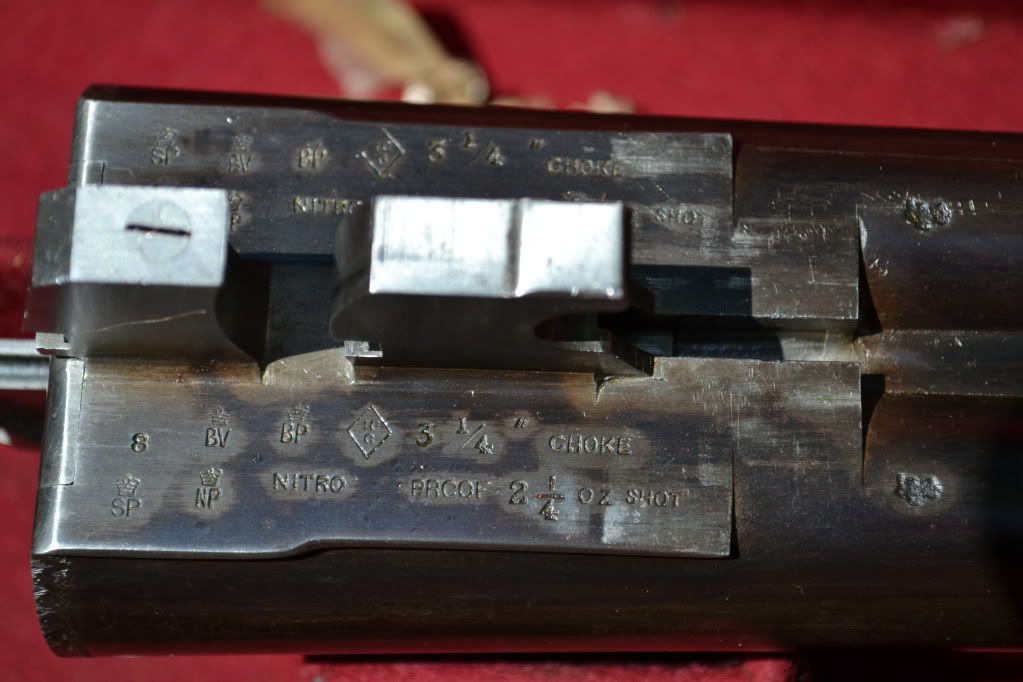
Proof marks from the website of the Birmingham proof house -
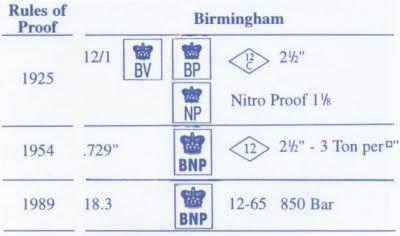
 [/img]
[/img]



